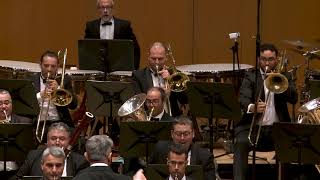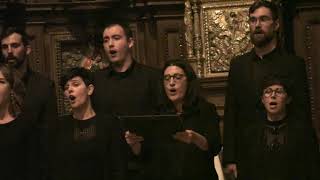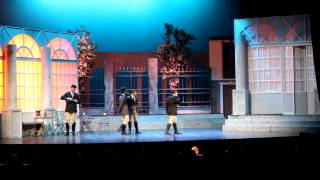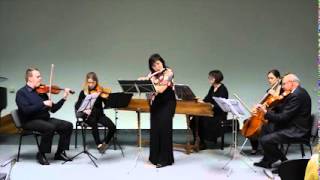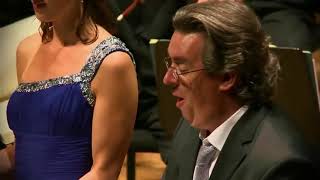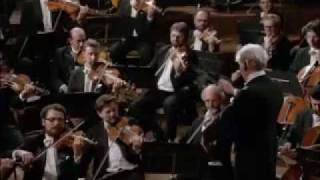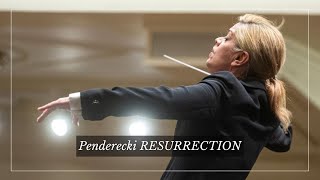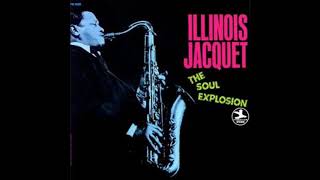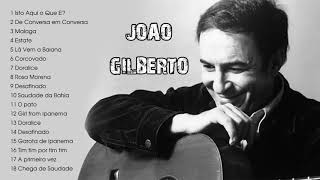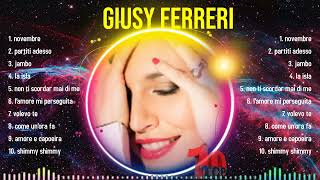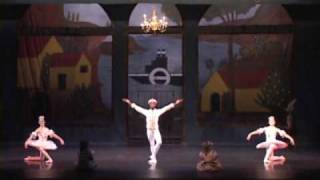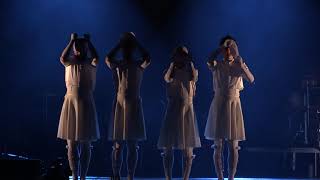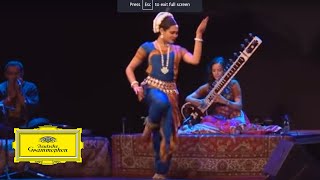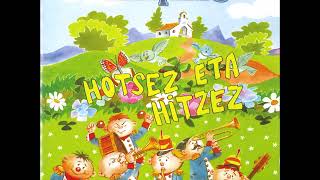On September 22 at 2:44 p.m. Autumn begins in Spain
Recommended music videos for initiation to classical music
Joseph Kosma (22 October 1905 in Budapest – 7 August 1969 in La Roche-Guyon, France) was a Hungarian -born composer who became a French citizen in 1946. He was a student of Béla Bartók , with whom he studied at the Liszt Academy in Budapest , where he graduated in composition and conducting. In 1928 he won a scholarship to study at the Berlin Conservatory , where he met Lilli Apel , also a musician, who later became his wife. Appointed conductor of the Berlin Opera Orchestra , he left that post to join Bertolt Brecht 's travelling theatre company. From then on he composed music for theatre and songs, whose leading performers were Yves Montand and Juliette Gréco .
His best-known song is Les feuilles mortes (Dead Leaves), with lyrics by Prévert . The melody of its chorus became a classic jazz piece, entitled Autumn leaves . Today it is offered to us by the Municipal Music Band of A Coruña .
Francisco de Madina Igarzábal , known as Aita Madina (1907-1972) was a Lateran religious, musician and Basque composer born in Oñati, Gipuzkoa . As a teenager he entered the novitiate of the Canons Regular of the Lateran . In parallel to his theological studies he completed his training as a musician in Oñati and Burgos where he was a disciple of José María Beobide and Antonio José Martínez Palacios. In 1932 he was assigned to Argentina , where he developed his work as a musical composer, premiering numerous works. In 1955 he moved to New York, where he continued composing and premiering musical works both in the United States and Argentina , as well as in Spain . In April 1972 he moved for the last time from New York to his native hamlet of Oñati , where he would die a few months later.
Although his entire musical work was greatly influenced by Basque folklore, his best-known composition is probably the religious choral work Aita Gurea (Our Father), composed in Argentina in 1946 and which we now offer in a version by the Oñatiko Ganbara Abesbatza (Oñati Chamber Choir), a mixed-voice choral group founded in 1994 and today directed by Aitor Biain Bidarte. In his repertoire we can find pieces from all styles and periods: polyphony, folklore, gospel, spirituals… Basque folklore as well as pieces by contemporary composers.
Václav Trojan (1907 – 1983) was a Czech composer of classical music best known for his film scores. He studied composition at the Prague Conservatory with Jaroslav Křička and Otakar Ostrčil . He continued his studies at the composition masterclasses of Alois Hába , Josef Suk and
Vítězslav Novák was a composer and arranger of jazz and dance music and musical director of Radio Prague from 1937 to 1945. After World War II he composed most frequently for film, theatre and radio, gaining international fame for his music for the popular Trnka animated puppet films. Trojan 's music is written primarily in a neoclassical style and was often inspired by Czech folk music traditions.
The Tarantella is a popular dance from Southern Italy , from the Italian regions of Calabria, Campania and Apulia . Its name most likely derives from the city of Taranto in Apulia , although there are voices that relate it with the word tarantula , since during the Middle Ages the tarantella dance was related to the act of scaring away the tarantula . It is a dance that has a very lively movement, frequently accompanied by singing. In its most common modern form, it is a courtship dance between couples with music in 6/8 time that progressively increases in speed and is accompanied by castanets and tambourines; it usually has two well-differentiated parts: one in minor mode and one in major.
Reveriano Soutullo Otero ( Puenteareas , Pontevedra, 11 July 1880 - Madrid , 29 October 1932) was a Spanish composer of zarzuelas and pasodobles. His father directed the Redondela band, so Reveriano was close to music from a young age. At the age of 19, he went to study at the Madrid Conservatory and in the meantime, he earned his living playing the cornet. He suffered an ear infection that left him half deaf. In Madrid he studied harmony and composition for three years, a subject in which he was awarded the extraordinary prize. Between 1906 and 1907 he returned to Vigo , where he was awarded a scholarship to study music abroad. Thanks to this he came into contact with Italian and German musicians; but the musicians who marked him the most were in Paris: Debussy and Ravel .
Juan Bautista Vert Carbonell ( Carcagente , Valencia, 1890 - Madrid , 16 February 1931) was a Spanish zarzuela composer. When he was a few months old, his family moved to Onteniente , the city where he grew up, lived and owned, beginning his musical studies with Enrique Casanova , director of the local band and organist of the Arciprestal Church of the Assumption of Santa María . A few years later, he continued his piano, harmony and composition with Manuel Ferrando . At the age of fourteen he already mastered the violin and piano and in 1911 he moved to Madrid enrolling in the Royal Conservatory of Music , where he obtained the honorary prize in Harmony and Composition. He died suddenly in his Madrid apartment at the age of forty while writing La maja serrana .
The Legend of the Kiss is a zarzuela in two acts, divided into three scenes, with a libretto by Enrique Reoyo, José Silva Aramburu and Antonio Paso , and music by the masters Reveriano Soutullo and Juan Vert . It premiered with great success at the Teatro Apolo in Madrid , on Friday, January 18, 1924.
Today it is presented by the Andalusian Lyric Theatre Company, musically directed on this occasion by maestro José Manuel Padilla .
Recommended classical music videos
Johann Joachim Quantz (1697-1773) was a German composer and flutist. By the age of eight he was already playing the double bass at local festivals. By the time he had finished his studies he could play the main string instruments and all the usual wind instruments, with the exception of the transverse flute, which he later studied in Warsaw. During his travels in Europe he became personally acquainted with Scarlatti and Handel ; in 1728 he met Prince Frederick of Prussia , later called Frederick the Great , who took him on as his private flute teacher. When the prince was proclaimed king, Quantz took direct command of the new monarch, giving him daily flute and composition lessons and remaining as court composer, performing his own compositions as well as those of the king.
Catalogue of Quantz's works . His works are numbered preceded by the consonants QV , abbreviation of Quantz Verzeichnis (Quantz Directory). Directory comprising more than 200 sonatas, 300 concertos, for one or two flutes, chamber music and some arias. He also published several very complete treatises on flute performance at the end of the Baroque .
Today we offer the Flute Concerto in G minor, QV 5-193 in a version by the flutist Ivica Gabrišová accompanied by the Varga Quartett and the harpsichordist Agi Ferienčíková . Concerto articulated in three movements: I (0´9´´) ALLEGRO .-. II (7´19´´) ADAGIO .-. III (13´04´´) VIVACE
Franz Joseph Haydn (1732-1809), Austrian composer whose brother Michael Haydn was also a notable composer, was one of the main pillars on which classicism was based (1750-1810). At the age of six he began his studies of harpsichord and violin. At the age of eight he was admitted as a chorister at St. Stephen's Cathedral in Vienna where he continued his musical studies. After his voice lost, he had to survive by working various jobs, while studying composition by analyzing the works of Carl Philipp Emanuel Bach . He maintained a close friendship with Mozart and was Beethoven 's teacher. He laid the main foundations of the sonata form and the formal structure of the string quartet and the symphony . He died at the age of 77 in Vienna .
The catalogue of Haydn's works . The works of Joseph Haydn are now classified according to the system devised by Anthony van Hoboken. Each work is identified by a Roman numeral corresponding to the category, which in most cases is identified by a genre. Some categories have subdivisions, which are indicated by a lower-case letter followed by an Arabic numeral corresponding to the order of the particular work within the category. These numerals are preceded by the word Hoboken (in memory of the author of the catalogue) and sometimes by Hob (his abbreviation).
Die Jahreszeiten (The Seasons) Hob. XXI. 3 Haydn was spurred to write this secular oratorio by the great success of his earlier oratorio The Creation (1798), which had become very popular and was being performed all over Europe. Like The Creation, The Seasons was conceived as a bilingual work; since Haydn was very popular in England (especially after his visits there in 1791–92 and 1794–95), he wished the work to be performable in both English and German, so it took Haydn two years to complete the work. The Seasons is scored for a fairly large orchestra, a chorus singing mainly four voices, and three vocal soloists: the same as in The Creation .
The oratorio is divided into four parts, corresponding to Spring, Summer, Autumn and Winter , with the usual recitatives, arias, choruses and ensemble numbers. Today we offer the third, Autumn , in a version by the Octopus Symphony Chorus accompanied by the Le Concert d'Anvers orchestra conducted by maestro Bart Van Reyn.
Johannes Brahms (1833-1897), born in Vienna , where he spent most of his life, was the most conservative composer of the Romantic movement, as opposed to the progressive movement led by Liszt and Wagner . His music is firmly rooted in the structures and composition techniques of the classical masters, and its formal structures faithfully follow the patterns of Classicism , although he uses some of the colour of Romanticism and popular music. Eminently perfectionist in character, he wrote for piano, chamber ensembles, symphony orchestra, for solo voices and for choir. It was Hans von Bulow who proposed the "three Bs", referring to Bach , Beethoven and Brahms as the three main pillars of the history of music.
Catalogue of Brahms's works . His works are classified by their Opus number (from Latin opus 'work'; op. abbreviation) which is a term used in music to catalogue the works of most composers since the 17th century .
The Academic Festival Overture op. 80 (Academic Festival Overture) is a concert overture composed by Johannes Brahms and dates back, like his other overture, the Tragic Overture , to 1880; it was also premiered on 4 January 1881 in Breslau under the direction of the composer. The piece was written in 1879 as a thank you to the University of Philosophy in Breslau after being awarded an honorary doctorate. Thus, the Academic Festival Overture is a kind of fantasy in which he uses a dozen different motifs, among them four student songs: Wir hatten gebaut ein stattiches Haus, Melodie des Landesvaters, Was kimmt dort von der Höh and above all the famous Gaudeamus igitur , with which the work ends with a jocose solemnity.
Today we are treated to it by the late American conductor Leonard Bernstein .
Krzysztof Penderecki (1933-2020) was a Polish classical composer and conductor, known for his compositional style, specifically recognizable in his atonal works, some of which have been used for famous films. After taking private lessons with Franciszek Skolyszewski , he studied music at the Academy of Music in Kraków with Artur Malawski and Stanislaw Wiechowicz . After graduating in 1958, he took a teaching position at the Academy . Penderecki 's early works show the influence of Igor Stravinsky, Anton Webern and Pierre Boulez . His international recognition began in 1959 at the Warsaw Autumn Festival with the premiere of the piece Treno to the Victims of Hiroshima , written for 52 bowed string instruments.
Mūza Rubackytė (born 19 May 1959) is a Lithuanian pianist, currently based in Vilnius, Paris and Geneva . After graduating from the Moscow Tchaikovsky Conservatory , she was a prizewinner at the All Union Competition in St. Petersburg and the Grand Prix at the Liszt-Bartok International Piano Competition in Budapest . Named a National Artist of Lithuania , she frequents the most prestigious festivals and concert halls in Europe and America and performs with the world's most renowned conductors. A professor at the Lithuanian Academy of Music and Theatre , she gives master classes all over the world.
Today, accompanied by the Lithuanian National Symphony conducted by Canadian maestro Keri-Lynn Wilson , she offers us Penderecki 's Resurrection Concerto for piano and orchestra.
Recommended music videos for all tastes
Illinois Jacquet (1922 – 2004) was an American jazz tenor and alto saxophonist. He was born in Louisiana , but grew up in Houston, Texas . After playing in local bands, in 1939 he moved to Los Angeles, California , where he met Nat King Cole . In 1940, Cole introduced him to Lionel Hampton , who was forming a big band. In 1943 he left Hampton 's band to join Cab Calloway 's orchestra. In 1944, he returned to California and formed a group with his brother Russell and Charles Mingus . In 1946, he moved to New York to join Count Basie 's orchestra, replacing Lester Young. He had a major influence on many other saxophonists of the time and later such as Arnett Cobb, Stanley Turrentine, Sonner and Rollins, Eddie "Lockjaw" Davis and Houston Person .
Linda Ronstadt (born July 15, 1946 in Tucson, Arizona) is a Mexican popular music singer. She has won eleven Grammy Awards, three American Music Awards , an Emmy Award, and has been nominated for a Tony Award and a Golden Globe Award . Her albums have received multiple gold, platinum, and multi-platinum certifications around the world. In 2014, she was inducted into the Rock and Roll Hall of Fame and received the National Medal of Arts . During her career, she has released nearly 30 studio albums and 15 compilations, entering the Billboard Hot 100 chart 38 times. Ronstadt has appeared in more than 120 record productions and has sold more than 100 million records, making her one of the best-selling artists in history. In 2013, she was included in The New York Times ' best-seller list.
Her ranchera music album Canciones de mi Padre , which we offer today, made her one of the most eminent figures in the Mexican music scene.
João Gilberto (1931- 2019) was a Brazilian singer, songwriter and guitarist, considered along with Tom Jobim as one of the creators of bossa nova in the late 1950s. In 1950 he emigrated to the city of Rio de Janeiro , where he had some success singing in the band Garotos da Lua . After being expelled from the band for rebellion, he spent some years without work; but with the persistent idea of creating a new form of musical expression with the guitar, which he had learned to play self-taught. His effort finally paid off after meeting Tom Jobim - a classically educated pianist and composer who also liked American jazz - with whom he began to mature the style that became known as Bossa nova .
Bossa nova (new wave) was a distillation of the percussive, syncopated rhythm of samba into a simplified form that could be played on a guitar without further accompaniment. João Gilberto is credited with creating this genre, which also introduced a new way of singing, at low volume.
Giusy Ferreri (1979) is an Italian singer-songwriter who in 2008 took part in the first edition of the Italian version of Factor X , where she came second. She currently holds three records: she is the singer launched by an Italian talent show who has sold the most copies worldwide with nearly 2.5 million albums and singles, she is the artist who has remained at number 1 on the Italian singles chart the longest (a record held by singer Madonna with 38 weeks) and she is also the only Italian artist, along with Baby K , to have obtained a diamond record for a digital single, thanks to Roma-Bangkok .
Recommended peculiar videos
Gioachino Rossini (1792-1868) was an Italian composer of 39 operas, various songs, some piano works and some sacred music. He began composing at the age of 12. In 1812 he was hired by La Scala in Milan where he had a memorable success with “La piedra de toque” ; the following year he premiered his first serious opera, Tancredi , in Venice . Shortly afterwards he premiered another great success, La italiana in Algiers . In 1815 he settled in Naples where he wrote regularly and without stress with rehearsals and regulated dates. In 1822 he moved to Vienna where he met the admired Beethoven . From Vienna to London , back to Paris and after the premiere of his last opera, Guillermo Tell , he abandoned opera at the height of its economic and popularity at the age of 37. In 1835 he settled in Passy where he died at the age of 77.
Ottorino Respighi (1879 – 1936) was an Italian composer, conductor and musicologist. He began studying piano and violin with his father and continued at the Liceo Musicale in Bologna , as well as composition and historical studies of early music. In 1900 he accepted the role of principal violist in the orchestra of the Russian Theatre in St. Petersburg , where he met Rimsky-Korsakov , with whom he studied orchestration for five months, after which he returned to Bologna. In 1913 he was appointed professor of composition at the Conservatorio di Santa Cecilia in Rome , a post he held for the rest of his life. He wrote works for piano, guitar, violin and piano, various chamber ensembles, numerous symphonic music, choral music, eight operas and five ballets.
La Boutique fantasque , also known as The Magic Toyshop or The Fantastic Toyshop , is a one-act ballet conceived by Léonide Massine , who devised the choreography from a libretto written with André Derain , who also designed the ballet's set and costumes. Ottorino Respighi wrote the music based on piano pieces by Gioachino Rossini . Its world premiere was at the Alhambra Theatre in London on 5 June 1919, performed by Sergei Diaghilev 's Ballets Russes . Massine 's action centres on the love affair between two can-can dancing dolls in a toyshop, incorporating elements of comedy, national folk dance and mime as well as classical choreography. Today we offer a small selection by the Portland Ballet .
Kukai Dantza is a company that was born and resides in Errenteria (Guipúzcoa-Basque Country), created on the initiative of the dancer and choreographer Jon Maia Sein , in 2001. Having as its hallmark contemporary creation based on traditional dance, it has created numerous successful shows and collaborations. She has promoted encounters with numerous artistic languages (theater, cinema, plastic arts, architecture, gastronomy…) and her shows have been performed in theaters and festivals in more than twenty-five countries, having received notable awards: National Dance Award 2017, MAX AWARDS for the performing arts 2009, 2015, 2017 and 2019, Critics' Award of Catalonia 2016, Donostia Theater Award, Awards at International Festivals in Huesca, Valladolid, Umore Azoka Honorary Award…
Tango is a musical genre and a dance characteristic of the Río de la Plata region and its area of influence, but mainly of the cities of Buenos Aires (in Argentina) and Montevideo (in Uruguay). Six main musical styles left their mark on tango: Andalusian tango, Cuban habanera, candombe, milonga, mazurka and European polka . Tango revolutionized popular dance by introducing a sensual dance with an embraced couple that proposes a deep emotional relationship between each person and their own body and between the bodies of the dancers themselves. Musically it usually has a binary form (theme and chorus) or ternary (two parts to which a trio is added). On September 30, 2009, UNESCO declared it an Intangible Cultural Heritage of Humanity.
Indian dance is today recognised as one of the major artistic heritages of the entire world. The art of dance in India comprises such a range of means of expression, rhythm, beauty, poetry, music, drama and colour that it can be said to be the most complete and attractive of the arts that India has bequeathed to the world. Legend has it that the god Brahma was the first to conceive the idea of dance, whose function was not only to entertain the eye, but also to elevate the spirit. The legend has its meaning, because it indicates the serious and important character adopted by India with regard to dance, which is considered there from an intellectual, philosophical, moral and religious aspect. Dance has developed in this country around the temples to be elevated to the value of an essential rite. (Juan Roger Rivier)
Recommended music videos for children
Various Wikipedia articles have been used to write these texts.
The texts of Videomusicalis are written in Basque, Spanish and English.





